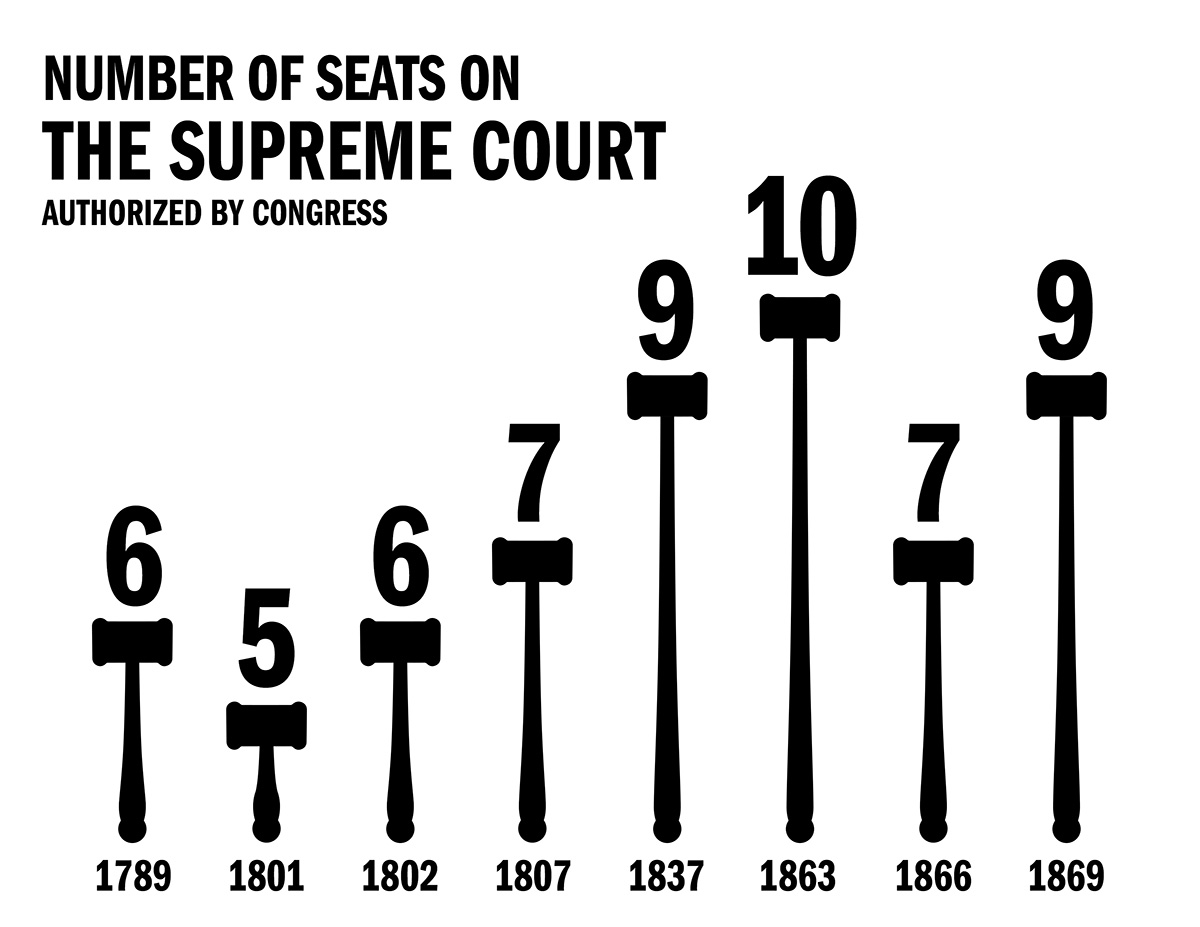In addition to the materials in the Basic High School Lesson Plan, here are some questions for further study:

- As this chart shows, the Supreme Court changed size seven times in the 19th century. What was the central administrative reason compelling Congress to add new seats? Did FDR have a valid administrative reason to enlarge the Court in 1937?
- In light of the doctrine of separation of powers in the Constitution and the system of checks and balances therein, was FDR’s Court-packing scheme constitutional?
- Write a brief dialogue between Thomas Jefferson* and Alexander Hamilton** as they discuss the relative merits of the Court-packing plan.
*For Jefferson “Their [the Supreme Court justices’] power [is] the more dangerous as they are in office for life, and not responsible, as the other functionaries are, to the elective control.” [As quoted in a letter to William Jarvis, 1820.]
**For Hamilton, the Judiciary was “the least dangerous branch of government.” In Federalist #78, he argues “It equally proves, that though individual oppression may now and then proceed from the courts of justice, the general liberty of the people can never be endangered from that quarter; I mean so long as the judiciary remains truly distinct from both the legislature and the executive.” - If the nine justices in 1937 decided that they didn’t want to share power with any additional justices, could they have cited Marbury v. Madison and the Judiciary Act of 1869 and preserved their exclusive status against the combined weight of both the executive and the legislature? Explain.
- Did FDR’s Court-packing plan eventually strengthen or weaken the New Deal? What factors ensured that core New Deal programs became constitutionally safe from judicial overrule?




